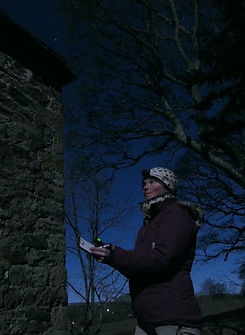
Bat Surveys

All UK bat species and their roosts are protected by law; it is illegal to disturb, injure or kill a bat, or to obstruct, damage or destroy a bat roost. A bat survey should be undertaken where there is a possibility that bats or their roosts may be affected by proposed works.
Although some bats roost in old buildings and churches, many prefer centrally heated modern houses. The nearby proximity of woodland, rivers and ponds may also increase the chances of bats being present.
Where a project requires planning consent, the local planning authority has a duty to consider bats when exercising their functions. Bats are a ‘European Protected Species’ and, as such, are a material consideration in the planning process. This means information regarding their presence or absence must be provided prior to any consent being granted, and bat surveys cannot be conditioned within planning approval. Bat surveys must be carried out at the correct time of year, when bats are active (bats hibernate over the winter months), and good planning is key.
Bat surveys are carried out in two parts:
January - December

Risk Assessment
January - December
This is a preliminary daytime inspection to determine the likelihood of bats being present within a structure.
The risk assessment consists of a desk based study, including a background data search of known roosts in the area.
A licensed ecologist will visit the property to carry out an internal (where appropriate) and external inspection of the structure.

Activity Surveys
May - August
Where the preliminary inspection identifies a risk of bats being present, nocturnal activity surveys are undertaken to determine the presence or absence of roosting bats.
These surveys involve up to three visits to the exterior of the property or structure at dusk. to monitor bat activity.
We use Night Vision Aids (NVAs) such as infra-red technology to enhance our bat activity surveys
(click here to view footage).
Protected Species Licensing
Where bats are found to be roosting in a structure, and will be affected by the proposals, it is likely the project can still go ahead. Timing and methods of working may need to be adapted, and a licence may need to be obtained from Natural England to permit activities that would otherwise be illegal.
As part of the licensing process, new roosting provisions for bats are designed into the new development, which replicate those conditions provided by the old structure. Durham Dales Ecology has years of experience of designing mitigation strategies for bats, which culminate in successful planning approval and Natural England licences.
Earned Recognition Accreditation
The Bat Earned Recognition Project is a professional accreditation scheme, launched in 2022 through a partnership between Natural England, the Bat Conservation Trust and the Chartered Institute of Ecology and Environmental Management. The scheme is designed to streamline bat mitigation licensing, whilst also raising and maintaining professional standards in bat mitigation work and improving outcomes for bats. Earned Recognition works on the basis of assessing a consultant's competence in undertaking bat survey work and designing effective mitigation so that, by using an accredited consultant, developers can experience a more streamlined and efficient licensing process for their scheme or project. After a site is registered, the earned recognition consultant also has more flexibility to deal with unexpected developments on site without the need to halt works for a licence modification.

Fran Mudd of Durham Dales Ecology has successfully completed the rigorous assessment process required of participants in this scheme, and is pleased to be part of the first cohort (of around 60 individuals across the country) of Earned Recognition accredited consultants.

